1988 Chilean national plebiscite
The 1988 Chilean national plebiscite was a national referendum held on 5 October 1988 to determine whether Chile's president, Augusto Pinochet, should extend his rule for another eight years. The "No" side won with nearly 56% of the vote, thus ending the general's sixteen and a half years in power.
| 1988 Chilean national plebiscite | ||||||||||||||||||||||
|---|---|---|---|---|---|---|---|---|---|---|---|---|---|---|---|---|---|---|---|---|---|---|
| For information about the options, see below | ||||||||||||||||||||||
| Date | 5 October 1988 | |||||||||||||||||||||
| ||||||||||||||||||||||
 |
|---|
| This article is part of a series on the politics and government of Chile |
|
Executive
|
| Comptroller General |
| Constitutional Court |
|
|
The fact the dictatorship respected the results is attributed to pressure from big business, the international community and unease with extended rule by Pinochet within the dictatorship.[1]
Background
Army General Augusto Pinochet took power on 11 September 1973 in a U.S./CIA-backed[2] coup d'état which deposed the democratically elected Socialist President Salvador Allende. Allende killed himself as the presidential palace was being bombarded.[3] A military junta — led by Pinochet, Air Force General Gustavo Leigh, Navy Admiral José Toribio Merino, and Carabinero Chief General César Mendoza — was sworn in the same evening. The following day, the four drafted an official document suspending the 1925 constitution and Congress and establishing the Junta as the country's supreme authority. Pinochet was designated as its first president, and the four verbally agreed to rotate the office. Shortly after, the Junta established an advisory committee, which Pinochet was successful in staffing with Army officers loyal to himself. One of their first recommendations was to discard the idea of a rotating presidency, arguing it would create too many administrative problems and lead to confusion.[4] In March 1974, six months after the Junta's establishment, Pinochet verbally attacked the Christian Democratic Party and stated that there was no set timetable for a return to civilian rule. On 18 December 1974 Pinochet was declared Supreme Leader of the nation.[4] After that date, the junta functioned strictly as a legislative body until the return to democracy in 1990.
On 24 September 1973, a commission was set up by the junta to draw up a blueprint for a new constitution. By 5 October 1978, the commission had finished its work. During the next two years, the proposal was studied by the Council of State presided by former president Jorge Alessandri, and in July 1980 it submitted a Constitution draft to Pinochet and the Junta. A constitutional referendum, regarded as "highly irregular"[5] and forthrightly "fraudulent"[6] by some observers, took place on 11 September 1980, in which the new constitution was approved by 67% of voters.[7] The Constitution, which took effect on 11 March 1981, established a "transition period," during which Pinochet would continue to exercise executive power and the Junta legislative power, for the next eight years. Before that period ended, a candidate for President was to be proposed by the Commanders-in-Chief of the Armed Forces and Carabinero Chief General for the following period of eight years. The candidate was to be ratified by registered voters in a national plebiscite. On 30 August 1988 Pinochet was declared to be the candidate.
During the last years of the dictatorship the commanders-in-chief of the Navy, Air Force and Carabineros disassociated themselves from Pinochet, expressing their wishes that a civilian should represent the regime in the 1988 plebiscite. Pinochet however imposed himself as candidate.[1]
Plebiscite
The plebiscite —as detailed in the 1980 Constitution— consisted of two choices:
- Yes: The proposed candidate is approved. Pinochet takes office on 11 March 1989 for an eight-year mandate, and parliamentary elections are held nine months after he is sworn in. The Junta continues to exercise legislative power until the newly elected Congress takes office on 11 March 1990.
- No: The proposed candidate is rejected. Pinochet and the Junta continue in power for another year. Presidential and parliamentary elections are held three months before Pinochet's term expires. The newly elected President and Congress take office on 11 March 1990.
Political endorsements
Yes
- Democratic Party of Chile (Partido Democrático de Chile)
- Great Civic Front of Chile (Gran Frente Cívico de Chile)


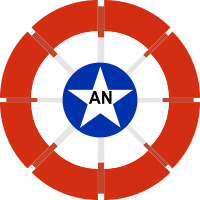

%2C_Chile.svg.png)
- Radical Democracy (Democracia Radical)

- Party of the South (Partido del Sur)
No


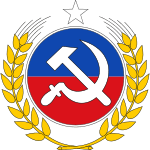
.svg.png)
.png)

- National Democratic Party (Partido Democrático Nacional)

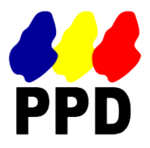

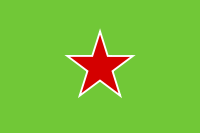
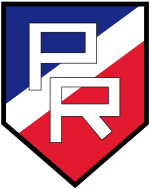

- Social Democracy Party of Chile (Partido Social Democracia de Chile)
- Democratic Socialist Radical Party (Partido Radical Socialista Democrático)
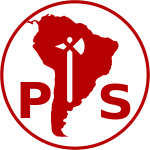




Null vote

The campaign


The campaign is regarded, along with the registration process, as one of the key factors that led to the victory of the No side in the plebiscite.
For the first time in the history of Chile, both options were guaranteed free electoral advertising spaces—franjas—of 15 minutes each, late at night or early in the morning. (There were similar spaces in prime time, but only for the government). They were first broadcast on 5 September, at 11 pm, just one month before the referendum. In a short time the spots prepared by the No side were seen to be better, despite the Yes side creating a more elaborate campaign devised by an Argentinian advertising agency and with the assistance of the Chilean Armed Forces. The Minister of the Interior Sergio Fernández, one of the main coordinators of the official campaign, said:
The (campaign) results were poor. In a few days nobody could ignore the evident technical superiority of the No campaign: superior in argumentation, superior in filming, superior in music. Its signature tune, with the slogan "La alegría ya viene" (Joy is coming) as its main element, was so catchy that even the Yes campaign creatives hummed it during their brainstorming sessions.
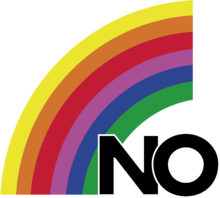
The No side used a rainbow as its main symbol, with the intention of symbolising the plural views of the opposition (each member party had its own colour depicted in the rainbow) and, at the same time, the hope of a better Chile and a more prosperous future. Their campaign, directed by American and Chilean advertising men, combined both criticism (including testimony by victims of torture and relatives of disappeared people during the dictatorship) and optimism, highlighting that the No option did not mean returning to the socialist system of former President Salvador Allende, but the re-establishment of democracy. This idea was supported by the appearance of right-wing leaders standing for No. A popular jingle was composed, with the main slogan of the campaign, "Chile, la alegría ya viene" (Chile, joy is on its way), and both Chilean and international celebrities, such as Patricio Bañados (renowned journalist banned from TV by the Junta), Sting, Jane Fonda, Richard Dreyfuss, Sara Montiel, Robert Blake, Paloma San Basilio and Christopher Reeve starred in the No spots. One advert featured a middle-aged woman describing her experience of being kidnapped and tortured after the 1973 coup, and advocating a no vote, followed by her son Carlos Caszely, one of Chile's top footballers of the 1970s and 1980s,[9] and a critic of the Pinochet regime.[10]
The Yes campaign had two main goals: creating fear amongst voters by reminding them of the chaotic situation of Chile in 1973, with the consequent coup d'état (a background blamed on supporters of the No side), and improving the general perception of Augusto Pinochet, regarded by the public as an arrogant and authoritarian leader. The spots included jingles with lyrics supportive of the Junta and songs that were close to promoting a cult of personality around Pinochet, such as the main campaign anthem, "Un horizonte de esperanza" (A Horizon of Hope) or a Rapa Nui folk song, "Iorana, Presidente" (Hello, President). In its early stages the campaign put its focus on the economic success achieved by the government, but when this failed to appeal to viewers, the strategy followed was to introduce biased criticism of the No adverts and the publication of polls that showed massive support for Pinochet, and a new look of the programmes starting in the 18 September broadcast, with the new format almost identical to those of the No – a presenter, Hernán Serrano, introduced each topic, and more testimonies were added.
Both sides called for massive rallies: on 22 September the No side started the March of Joy (Marcha de la alegría), which lasted 10 days and joined supporters from the northernmost and southernmost cities of Chile in Santiago.[11] These rallies were often stopped by the Carabineros or the secret police on claimed suspicion of possible attacks, or for no stated reason, and the demonstrators were attacked by armed pro-Yes supporters without the police taking any action. On 2 October the Yes campaign called for a huge rally in downtown Santiago. The rallies had different coverage by the news media, which struggled to show more Chileans standing for the Yes side than for the No, and were considered to be too close to the Yes campaign.
Electorate
Voting was open to persons who were aged 18 or over on the day of the election, and were either Chilean citizens or foreigners who had resided legally in Chile for at least five years. Only those registered in the electoral roll could vote, but registration was not compulsory. Voting was mandatory for registered Chilean citizens.
Results
| Choice | Votes | % | Result |
|---|---|---|---|
| Yes | 3,119,110 | 44.01 | |
| 3,967,579 | 55.99 | Proposal rejected | |
| Valid votes | 7,086,689 | 97.72 | |
| Null votes | 94,594 | 1.30 | |
| Blank votes | 70,660 | 0.97 | |
| Total votes | 7,251,943 | 100 | |
| Registered voters | 7,429,404 | 97.61% turnout | |
| Voting-age population | 8,193,683 | 88.51% turnout | |
Source: Tribunal Calificador de Elecciones.
Result by regions
| Region | «Yes» | % | «No» | % | |
|---|---|---|---|---|---|
| I | Tarapacá | 75,849 | 44.71 | 93,800 | 55.29 |
| II | Antofagasta | 84,259 | 39.32 | 130,052 | 60.68 |
| III | Atacama | 49,400 | 43.84 | 63,293 | 56.16 |
| IV | Coquimbo | 114,250 | 46.02 | 133,997 | 53.98 |
| V | Valparaíso | 324,058 | 42.69 | 434,997 | 57.31 |
| VI | O'Higgins | 164,430 | 44.08 | 208,574 | 55.92 |
| VII | Maule | 220,742 | 48.83 | 231,348 | 51.17 |
| VIII | Biobío | 409,513 | 44.71 | 506,513 | 55.29 |
| IX | Araucanía | 220,090 | 54.05 | 187,071 | 45.95 |
| X | Los Lagos | 242,457 | 50.15 | 240,984 | 49.85 |
| XI | Aysén | 19,238 | 49.99 | 19,245 | 50.01 |
| XII | Magallanes | 35,549 | 42.36 | 48,372 | 57.64 |
| RM | Santiago Metropolitan | 1,159,275 | 40.98 | 1,669,333 | 59.02 |
| Total: 7,086,689 | 3,119,110 | 44.01 | 3,967,579 | 55.99 | |
Aftermath
In the wake of his electoral defeat, Pinochet had convened a meeting of his junta at La Moneda, in which he requested that they give him extraordinary powers— extraordinary powers the embattled dictator said he would use to have the military seize the capital. General Fernando Matthei refused, saying that he would not agree to such a thing under any circumstances.[12] Matthei would later become the first member of the junta to publicly admit that Pinochet had lost the plebiscite.
Pinochet and opposition forces agreed to revise the 1980 Constitution. The 54 proposed amendments were approved by 91% of voters in a referendum on 30 July 1989. Presidential and parliamentary elections took place as scheduled on 14 December 1989. The opposition candidate, Christian Democrat Patricio Aylwin, won the election with 55% of the vote, and took office on 11 March 1990. The newly elected Congress was sworn in the same day.
The other junta members, who had preferred a civilian to run for president instead of Pinochet, regarded the result as Pinochet's personal defeat.[1]
Popular culture
The 2012 film No presented a fictionalized account of the "No" television campaign. It was the first Chilean film nominated for an Academy Award for Best Foreign Language Film at the 85th Academy Awards.
See also
Further reading
- Ethan Kaplan, Fernando Saltiel, Sergio S. Urzúa. 2019. "Voting for Democracy: Chile's Plebiscito and the Electoral Participation of a Generation." NBER.
References
- Angell, Alan; Pollack, Benny (1990). "The Chilean Elections of 1989". Bulletin of Latin American Research. Society for Latin American Studies. 9 (1): 1–23. doi:10.2307/3338214. JSTOR 3338214.
- Kornbluh, Peter (2013). The Pinochet File: a declassified dossier on atrocity and accountability. New York: The New Press.
- "BBC News - Chile court confirms Salvador Allende committed suicide". Bbc.co.uk. 12 September 2012. Retrieved 23 January 2013.
- "CIA Activities in Chile — Central Intelligence Agency". Cia.gov. Retrieved 23 January 2013.
- "A Country Study: Chile". United States Library of Congress.
- "El Fraude: Claudio Fuentes S. Presentó libro sobre plebiscito de la Constitución de 1980".
- Nohlen, p268
- Daniel Labarca (19 July 2013). "Pugnas internas y denuncias de fraude provocan ruptura en partido de ex DC". La Tercera.
- Edwards, Lee (2001). Mediapolitik: How the Mass Media Have Transformed World Politics. Washington D.C.: CUA Press. pp. 242–243. ISBN 9780813209920. Retrieved 3 July 2014.
carlos caszely pinochet no.
- Gilles Perez and Gilles Rof. Football Rebels: Caszely and the demise of Allende (Television production). Retrieved 3 July 2014.
- "El plebiscito que cambió la historia de Chile | Periódico Diagonal". www.diagonalperiodico.net (in Spanish). Retrieved 11 June 2020.
- https://nsarchive2.gwu.edu/NSAEBB/NSAEBB413/docs/nodiajuntameeting.pdf
External links
- El plebiscito presidencial de 1988 National Democratic Institute (in Spanish)


